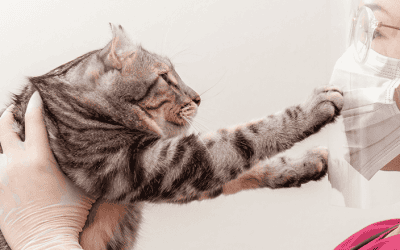My first swim into the deep end of the management pool was as an inventory manager. Over the years I keep coming back to the principles of effective inventory management again and again. As the second highest expense in a veterinary practice, having a solid knowledge of how to manage inventory is critical to a veterinary practice’s success.
Data points to monitor for effective inventory management
Recently, I’ve worked with several inventory managers to get their practices’ systems under better control. As part of my inventory consult, not only do we review their current systems, but we also review their data. There are several key data points you should be monitoring closely when it comes to inventory in your veterinary practice:
- Cost of inventory (pharmaceuticals, and hospital goods)
- Parasiticide expenses
- Laboratory expenses
- Radiology and surgery expenses
- Pet food expenses
- Over-the-counter goods expenses
- Retail products expenses
From an expense perspective, a good rule-of-thumb goal for total expenses for all of these variable costs is 19-21% of gross revenue. If your practice has high acceptance of laboratory recommendations especially when it comes to preventive care, your variable expenses will be slightly higher. To be sure you are on-track, each one of these expense data points should be measured as a direct ratio to the revenue they generate. Trended over time, you can easily spot problems before they occur. But when we aren’t paying attention, things can easily sneak up on us.

How to properly determine parasiticide markups is a common problem for veterinary practices
It was during a recent inventory consult that I spotted a problem related to parasiticide mark-up. I have since confirmed this problem in at least four additional practices, and it was a major topic of discussion and questions during an inventory session I taught at a recent FVMA annual conference in Tampa, which leaves me to believe that this isn’t an isolated incident.
Today’s veterinary practices are confused as to how to mark-up their parasiticides. When I was an inventory manager in the late 1990’s, it was pretty simple—-we marked every parasiticide product up 150%. It was a time when there was little to no competition in this area of prescribed products. However, times have dramatically changed and with it, so have our approaches to marking up these products. Today’s veterinary practices are marking up parasiticides anywhere from 55% to 150%, with little rhyme or reason. It’s time to get back to basics in not only monitoring our inventory data, but also in calculating our break-even points and using mark-ups that yield a desired profit in all areas of our inventory.
A formula for calculating a break-even analysis on a product
When calculating a break-even point on a product, you need to consider both the soft costs and the hard costs, along with the wholesale unit cost of the product. Soft costs include ordering and holding costs and they typically account for 23-35% of the cost of a product. Hard costs are the costs associated with paying the veterinarian for dispensing an item when they are compensated by the production or pro-sal methods. This can be anywhere from 10-25%, depending on the practice and the product.
[bctt tweet=”To perform a break-even analysis on a product, use the following formula:
Unit cost + Hard cost + Soft cost + (Profit X sales price) = Sales price”]
With profit goals of at least 15-20% of the cost, we can use this formula to appropriately price entire categories of items. Looking at parasiticides as a category, below is an example based on a parasiticide with a unit cost of $71.75. In this particular example, we are paying the veterinarian 20% of the sales price and we are attributing 25% to soft costs since we have strong inventory management controls in place with effective turnover rates.

The formula in action: a break-even analysis of a parasiticide product
$71.75 (unit cost) + $14.35 (hard cost) + $17.94 (soft cost) = $104.04
Once we factor in hard and soft costs, it’s easier to see the true cost of carrying a particular product. Now, we need to calculate earning a 20% return on our cost in order to come up with our sales price. To calculate this, one would divide the true cost by 80% (0.80).
$104.04 / 0.80 = $130.05 Minimum Sales price
In this example, the practice earns $26.01 for each unit sold of this particular parasiticide as long as they don’t go below this particular sales price. However, we are calculating the veterinarian’s production based on sales price so at 20%, we are actually paying the DVM an additional $11.66 above the calculated hard cost in our break-even analysis. This leaves the practice with a profit of only $14.35 (12.4%).
Inconsistent and random markups are leaving practices in the red
So what is the problem I’m seeing in practice after practice? Inconsistent and random mark-ups that leave the practice in the red after soft and hard costs are factored in. All items within a given category should be marked-up the same. Current industry averages for parasiticides is 90% mark-up. When we perform a break-even analysis, we can decide what we want our mark-up to be for any particular category. If you choose 85%, then apply an 85% mark-up to all items within the category. The only exception to be made is when you break units down into single doses. When you do this, you are increasing the soft costs, and this should be taken into account with an increased mark-up.

Conduct a break-even analysis for effective inventory management and improved profitability
In today’s veterinary practices, I’m seeing lowered mark-ups on external parasiticides in particular. In some cases, the practice is purchasing a combination parasiticide for the same price (or less) than an equivalent sized external only product and marking it up appropriately at 85-90%, and then marking up the external parasiticide, which has the exact same costs at 65-75%. If we apply this principle to our example, marking up an external only product by 75%, rather than closer to 90%, your practice actually loses $3.59 after paying your veterinarian.
When you lower the mark-up to this degree, you have to question why you’re carrying the product at all—you’re sinking, not swimming! For effective inventory management, take the time to do your break-even analysis in this particular area. Then make conscious choices about how much veterinarians in your practice are paid on these products, along with your desired profit. These factors will help lead your practice to improved profitability while still keeping items priced affordably for your clients.
Brenda Tassava is veterinary consultant and veterinary conference speaker. She consults privately with veterinary practices around the U.S. Brenda can be reached at [email protected].
This blog has been updated and was originally published July 6, 2016.



